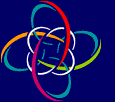 |
Realistic, Hardware-accelerated Shading and LightingWolfgang Heidrich, Hans-Peter SeidelMax-Planck-Institute for Computer Science Saarbrücken, Germany |
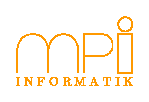
| ||
 |
Realistic, Hardware-accelerated Shading and LightingWolfgang Heidrich, Hans-Peter SeidelMax-Planck-Institute for Computer Science Saarbrücken, Germany |

| ||
![]()
Our approach is based on environment maps, because they offer a good compromise between rendering quality and storage requirements. With environment maps, 2-dimensional textures instead of the full 4-dimensional radiance field can be used to store the illumination.
Nonmetallic Objects - Fresnel Term
![]()
The images below show one half of a parabolic environment map (left), as well as two images of tori seen from two different viewing positions, to which this single environment map has been applied.
![]()

| 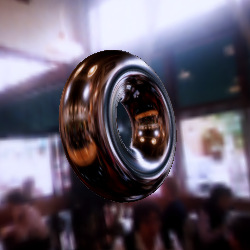
| 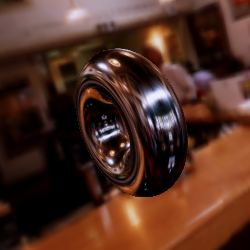
|
![]()
For non-metallic materials (materials with a small index of refraction), however, the reflectance strongly depends on the angle of the incoming light. Mirror reflections on these materials should be weighted by the Fresnel term for the angle between the normal and the viewing direction.
In OpenGL, this can be achieved using multipass rendering. The following images demonstrate this method for several different settings of the refractive index (1.5 in the left column, 20 in the center, and 200 in the right column). The top row simply contains the mirror reflection part weighted by the Fresnel term. Note how for high indices of refraction the image approaches the typical environment mapping look. In the middle row, a diffuse component has been added. In the bottom row the Fresnel term has been used to interpolate between the diffuse and the mirror term. This simulates a diffuse material covered by a transparent coating.
![]()
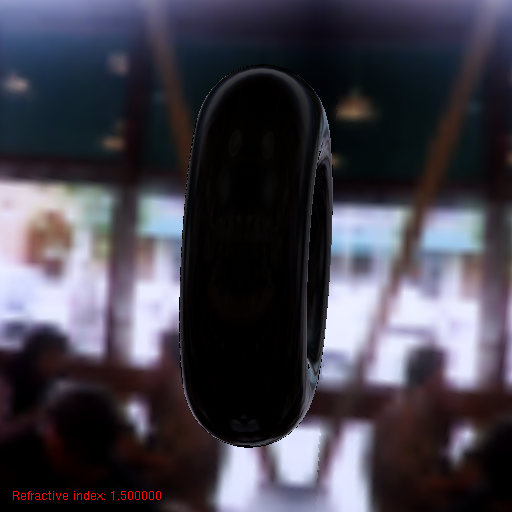
| 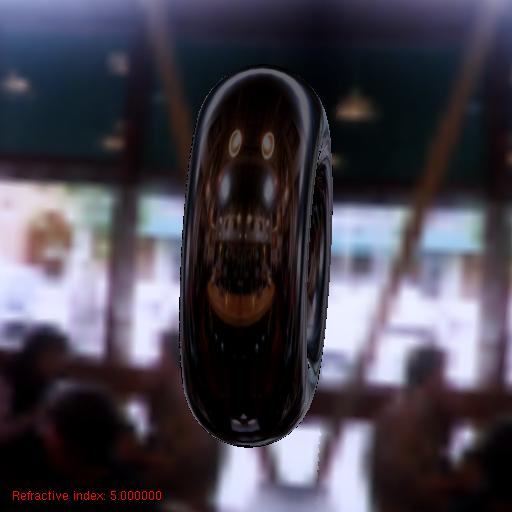
| 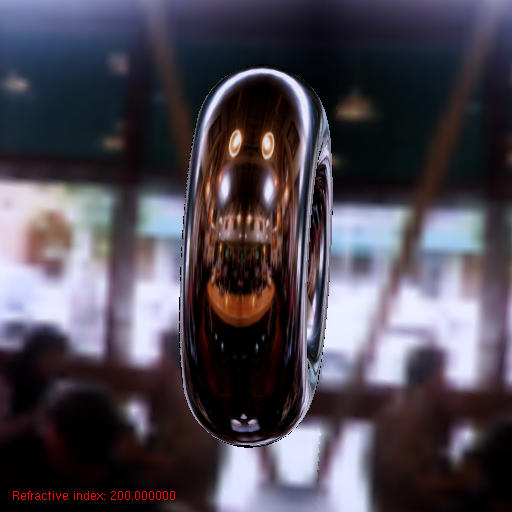
|
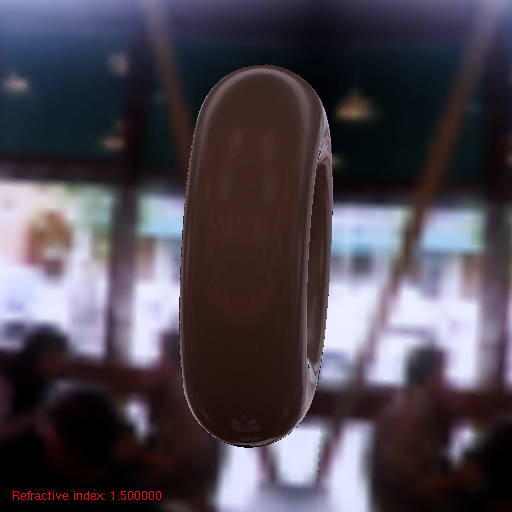
| 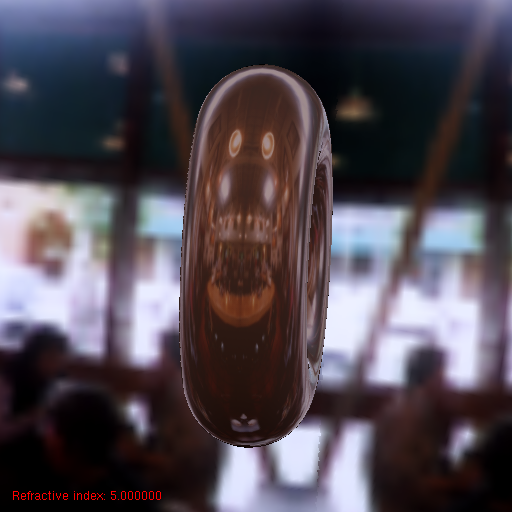
| 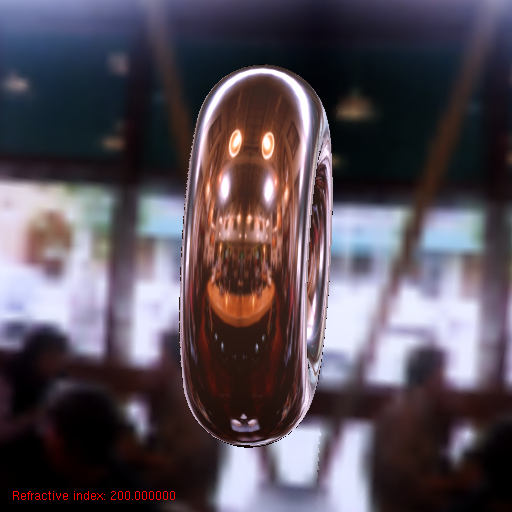
|
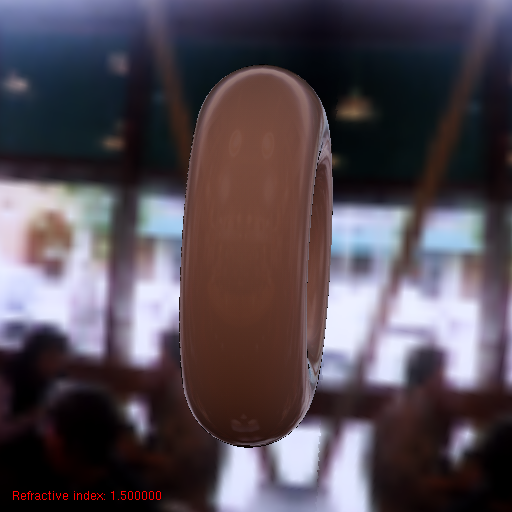
| 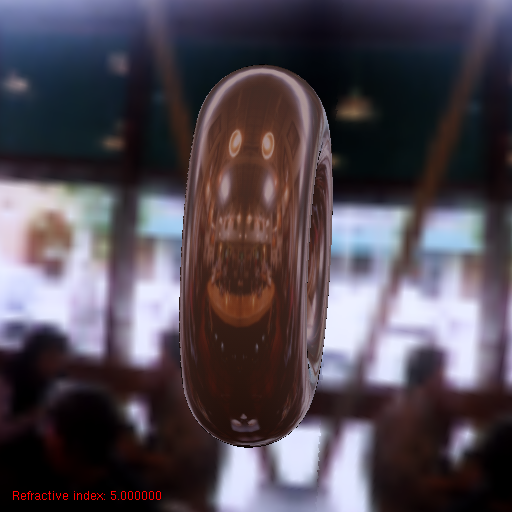
| 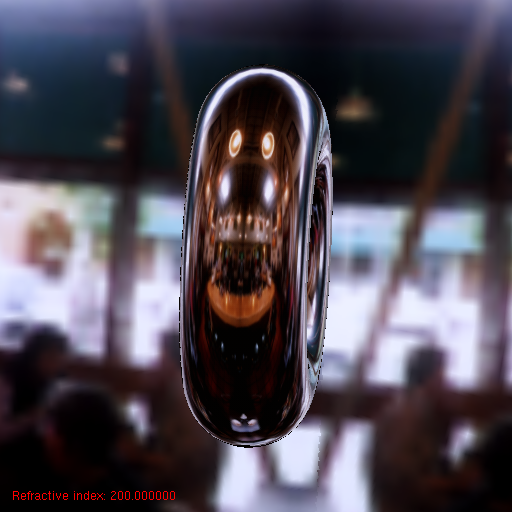
|
![]()
The following images show a prefiltered environment map (Phong exponent of 100) on the left, and two glossy objects to which this prefiltered map has been applied (center and right).
![]()

| 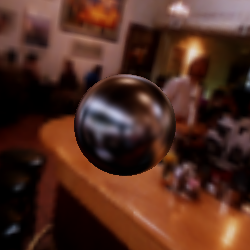
| 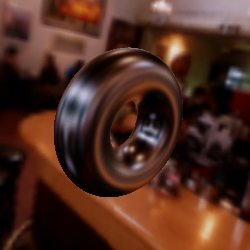
|
![]()